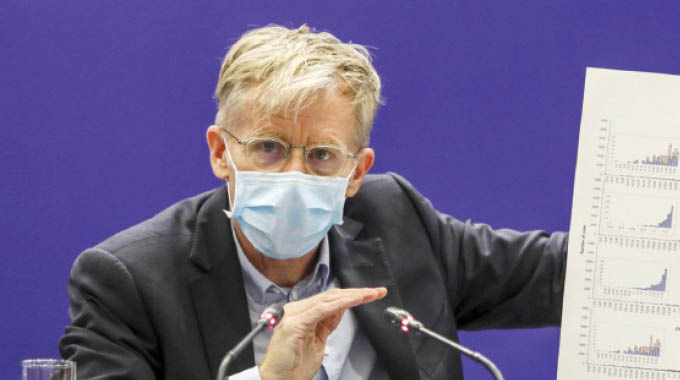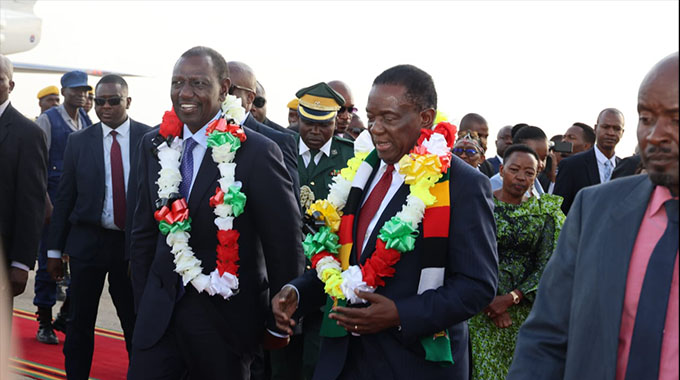EDITORIAL COMMENT: Improvement in Zambezi water flow pleasing

The magnitude of the flow of the Zambezi River and the water level at Lake Kariba have been at the heart of many locals in recent months.
This has been so given the centrality of the water bodies to local tourism and electricity generation.
Victoria Falls is a world-famous tourist attraction and easily Zimbabwe’s best, because of the 1 708-metre wall of water dropping for 108 metres, the Rain Forest that is perennially watered by the spray rising from the point where the sheet of water hits the base of the falls and many activities that tourists do around the natural wonder. Lake Kariba downstream hosts the country’s biggest power generating plant apart from supporting many leisure activities.
Inaccurate foreign media reports claimed in December that the Victoria Falls was drying up purportedly because of climate change. The reports failed to acknowledge that the size of the flow is naturally seasonal and therefore there was nothing unusual about the state of the falls at that time.
While reports on the Victoria Falls were grossly inaccurate, Lake Kariba’s storage capacity was adversely indeed affected by a slower Zambezi River.
This curtailed the lake’s electricity generating capacity, resulting in the rolling load shedding that our country and Zambia have been grappling with since May last year.
We, therefore, have been closely watching the situation on the Zambezi River with much interest in recent months.
We report elsewhere today that this very important river is returning to where we all want it to be. More water is flowing down to Victoria Falls and Lake Kariba, according to the Zambezi River Authority (ZRA).
Flows at Victoria Falls have increased by 25 percent, averaging 831 cubic metres per second (m3/s) from the 663 m3/s flow-rate recorded on February 7, 2020, the ZRA says. At the same time Lake Kariba levels have increased by 30cm over the past few weeks. Hydrological simulations have estimated that the levels will peak in June this year at 478 metres, which will be about three metres above the minimum operating levels for power generation.
ZRA chief executive Engineer Munyaradzi Munodawafa said:
“A notable increase in the Zambezi River flows was recorded at the Chavuma Gauging Station, increasing by as much as 3 159 m3/s between the 7th and 21st February 2020, an indication of intense run-off from the rainfall received in the area around the Zambezi headwaters.
The flows recorded at Chavuma have continued to rise, trending above the long term average by 208 percent when you compare the current flows recorded on 21st February, 2020 of 4 621m3/s with the long-term average flow of 1 500m3/s. Further, the Chavuma flow recorded on 21st February, 2020 of 4 621m3/s is also the highest flow observed in the month of February since 2006-07 when a flow of 4 065m3/s was recorded on 14th February 2007.”
The rising inflows should definitely assuage the fears many in the country had as the long dry spell threatened to totally shut down the Kariba South Power Station and impair the global appeal of Victoria Falls.
Tourists will now be reminded that yes there is a time when the natural wonder is seasonally low, around December of every year, particularly so after a drought as was the case last year but in the next few months, the falls should be at its most roaring.
Eng Munodawafa says the water use for electricity generation would be monitored until the lake level rises substantially to warrant an upward revision of the amount that can be safely set aside for that purpose. We understand it will be carefully monitored, which is good.
However, we are happy with the improvement in the water flow along the Zambezi and the resultant boost in the capacity of Lake Kariba, hopeful that the wet spell will continue upstream right from Zambia’s north west where the river rises from and along its course in Angola, Namibia and Botswana and parts of Zimbabwe. All indications are that the rains will continue falling in the Sadc region over the next few weeks which will feed into the Zambezi River and the lake which will encourage the ZRA to authorise an increase in water use for power generation.
This will alleviate the electricity load shedding that our country and Zambia are grappling with. That would be good for the peoples of both countries and their economies.










Comments